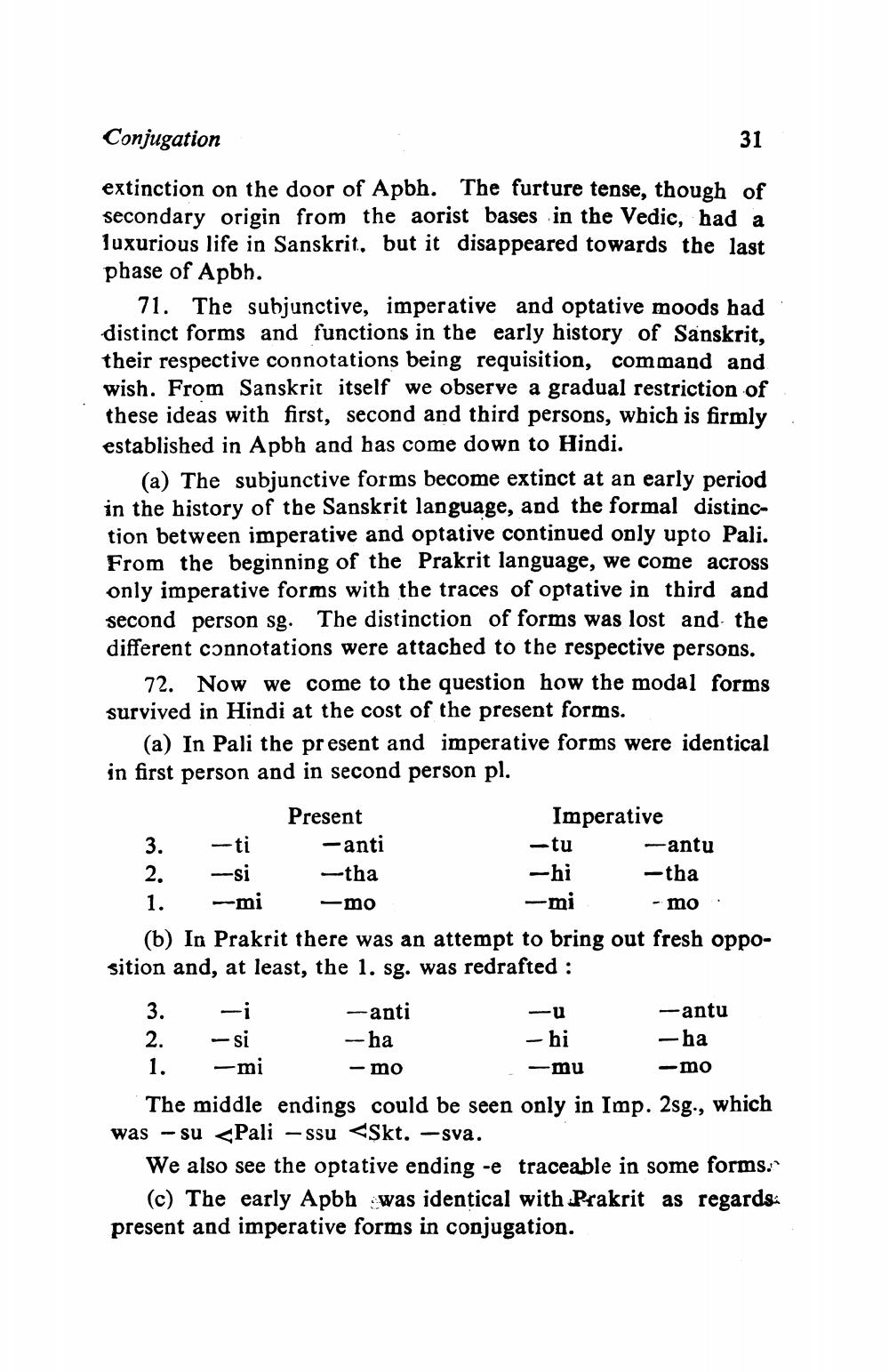________________
Conjugation
31
extinction on the door of Apbh. The furture tense, though of secondary origin from the aorist bases in the Vedic, had a luxurious life in Sanskrit. but it disappeared towards the last phase of Apbh.
71. The subjunctive, imperative and optative moods had distinct forms and functions in the early history of Sanskrit, their respective connotations being requisition, command and wish. From Sanskrit itself we observe a gradual restriction of these ideas with first, second and third persons, which is firmly established in Apbh and has come down to Hindi.
(a) The subjunctive forms become extinct at an early period in the history of the Sanskrit language, and the formal distinction between imperative and optative continued only upto Pali. From the beginning of the Prakrit language, we come across only imperative forms with the traces of optative in third and second person sg. The distinction of forms was lost and the different connotations were attached to the respective persons.
72. Now we come to the question how the modal forms survived in Hindi at the cost of the present forms.
(a) In Pali the present and imperative forms were identical in first person and in second person pl.
Present
Imperative -ti -anti
-tu
antu 2. --si --tha
- tha 1. -mi mo
-mi
- mo. (b) In Prakrit there was an attempt to bring out fresh opposition and, at least, the 1. sg. was redrafted : 3. -i -anti
-antu 2. - si
-- ha
-hi
- ha 1. -mi - mo
-mu
-mo The middle endings could be seen only in Imp. 2sg., which was - su <Pali - ssu <Skt. -sva.
We also see the optative ending -e traceable in some forms."
(c) The early Apbh was identical with Prakrit as regards. present and imperative forms in conjugation.




